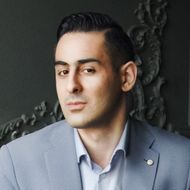HSE University Researchers Track Language Abilities of Russian Children with ASD

Researchers from the HSE Center for Language and Brain have, for the first time, described the language abilities of Russian children with Autism Spectrum Disorder (ASD) at all linguistic levels (e.g., phonology, lexicon, morphosyntax, and discourse), using a language test that takes into account the psycholinguistic variables most relevant for Russians. The study was published in Journal of Autism and Developmental Disorders.
In 2020, the US Centers for Disease Control and Prevention reported that one in every 54 children in the country is diagnosed with ASD. Usually, 75% of children with ASD have comorbid language impairments. Although numerous studies in the USA, UK and Europe have concentrated on these problems, in terms of the specific language profiles of children with ASD at the levels of phonology, lexicon, grammar, and discourse, hardly anything was known about the language abilities of Russian children with ASD.
Researchers from the HSE Center for Language and Brain conducted a comprehensive language assessment of Russian children with ASD. They relied on the Russian Child Language Assessment Battery (RuCLAB), which allows researchers to assess language production and comprehension in terms of the levels of phonology, lexicon, grammar, and discourse, with due consideration of such relevant psycholinguistic variables as word length, the age of acquisition of certain words, word frequency, the number of verb arguments, different sentence types, etc.
A total of 82 Russian primary-school-aged children with ASD participated in the study. Each child was screened with 11 subtests from the RuCLAB, along with two additional subtests on lexicon and phonology. Furthermore, the non-verbal IQ of children, as well as the severity of autistic traits, were measured.
The results showed that there was a significant difference between groups in all subtests, except for the simplest word repetition. Children with ASD had a lower accuracy than typically developing children. The researchers note that the lexicon of children with ASD was the least affected linguistic level, which is consistent with the studies on English-speaking children with ASD.

Vardan Arutiunian, author of the paper and Junior Research Fellow at the HSE Center for Language and Brain
‘In this work, it was important for us to identify the specific language profiles of Russian-speaking children with ASD at different linguistic levels, as well as understand how children’s age, non-verbal IQ, and the severity of autistic traits may account for the extent of language impairments.’
The results also demonstrate that non-verbal IQ dramatically influences language abilities, whereby the higher children’s non-verbal intelligence, the higher their language performance. Interestingly, age and the severity of autistic traits were not related to language abilities in children with ASD.
The final goal of the study was to subgroup children with ASD according to their language abilities in each subtest. With this in mind, the researchers divided autistic children into three subgroups, i.e., with normal, borderline, and impaired language abilities.
The total number of children with normal language abilities was related to their linguistic levels. For instance, in terms of word comprehension (lexicon), 22% of children were within the normal range; sentence repetition (morphosyntax) - 8% of children had scores within the normal range; discourse production (discourse) - the normal language group consisted of only 4% of children with ASD.
‘We found that the more complex the linguistic level, the lower the percentage of children with normal language abilities. Note that the same child may be in the normal group, according to their lexical abilities, but in the impaired group according to their grammatical development,’ comments Vardan Arutiunian, adding: ‘That is why the formal language of children with ASD needs to include all linguistic levels, from low-level phonology to high-order discourse. This will help experts to correctly determine the level of children’s language development, as well as provide the appropriate speech-language therapy.’
Vardan Arutiunian
Junior Research Fellow, Center for Language and Brain
See also:
HSE Scientists Reveal How Disrupted Brain Connectivity Affects Cognitive and Social Behaviour in Children with Autism
An international team of scientists, including researchers from the HSE Centre for Language and Brain, has for the first time studied the connectivity between the brain's sensorimotor and cognitive control networks in children with autism. Using fMRI data, the researchers found that connections within the cognitive control network (responsible for attention and inhibitory control) are weakened, while connections between this network and the sensorimotor network (responsible for movement and sensory processing) are, by contrast, excessively strong. These features manifest as difficulties in social interaction and behavioural regulation in children. The study has been published in Brain Imaging and Behavior.
Children with Autism Process Auditory Information Differently
A team of scientists, including researchers from the HSE Centre for Language and Brain, examined specific aspects of auditory perception in children with autism. The scientists observed atypical alpha rhythm activity both during sound perception and at rest. This suggests that these children experience abnormalities in the early stages of sound processing in the brain's auditory cortex. Over time, these abnormalities can result in language difficulties. The study findings have been published in Brain Structure and Function.
HSE Researchers Identified the Age-Related Changes in Gamma-Band Oscillations in Auditory Cortex in Children
Researchers from the HSE Center for Language and Brain have identified previously unknown age-related changes in brain activity during the perception of auditory information in a group of children aged 7–12 years. The researchers used magnetoencephalography (MEG), an ultra-precise method of brain activity recording. The results obtained can be used to explore the impairments in language comprehension in children with autism. The study was published in the Human Brain Mapping.
Brain Activity Can Reveal the Severity of Autistic Traits
A team of researchers from Russia and Israel applied a new algorithm to classify the severity of autistic personality traits by studying subjects’ brain activity. The article ‘Brief Report: Classification of Autistic Traits According to Brain Activity Recoded by fNIRS Using ε-Complexity Coefficients’ is published in the Journal of Autism and Developmental Disorders.
Complex Phonological Tests Are Useful for Diagnosing Reading Dysfunction
HSE University researchers have confirmed that the level of phonological processing skills in children can impact their ability to master reading. Complex phonological tests are best suited to detect phonological impairment. The study was published on September 6, 2020, in the Journal of Research in Reading.


